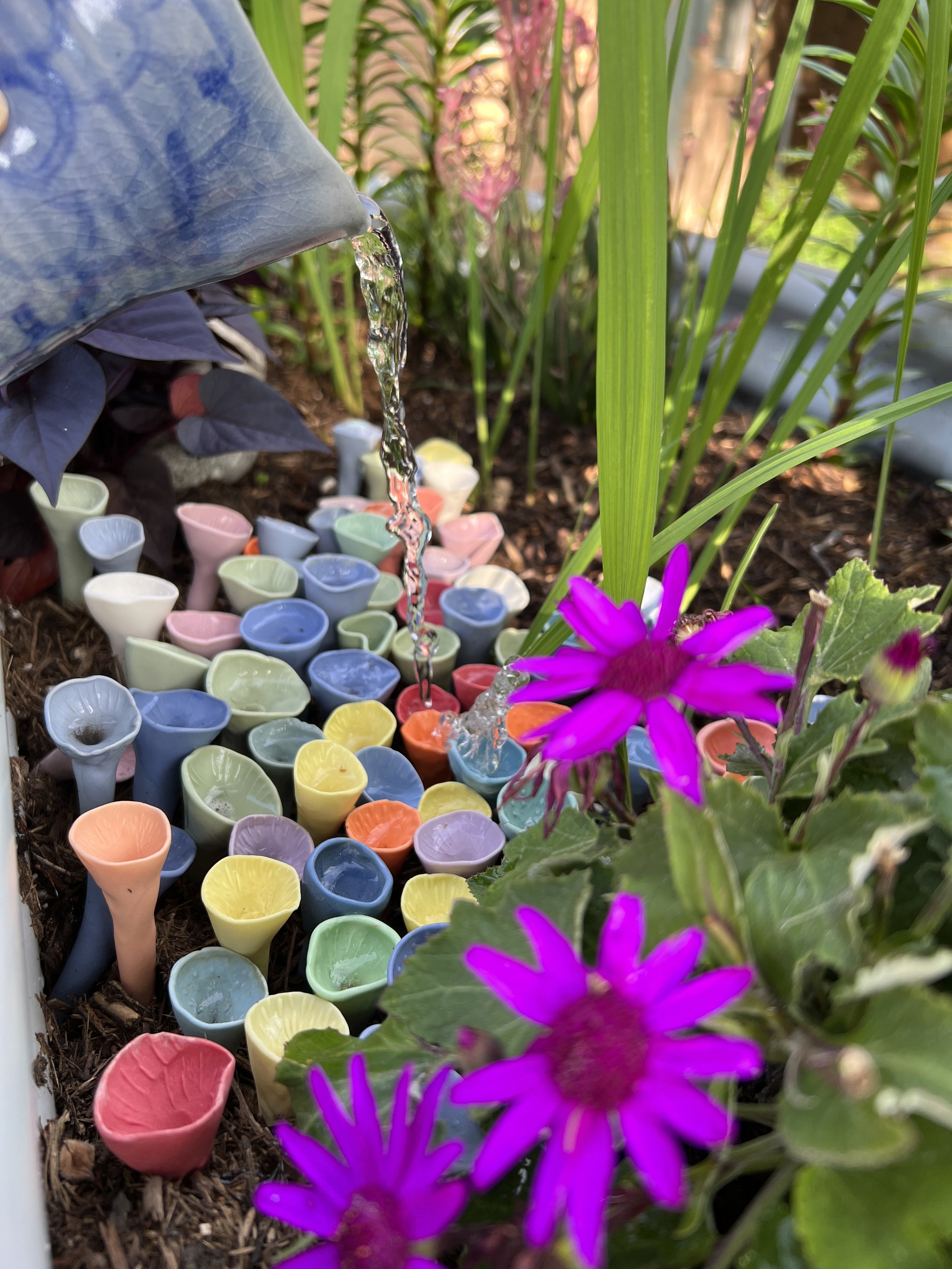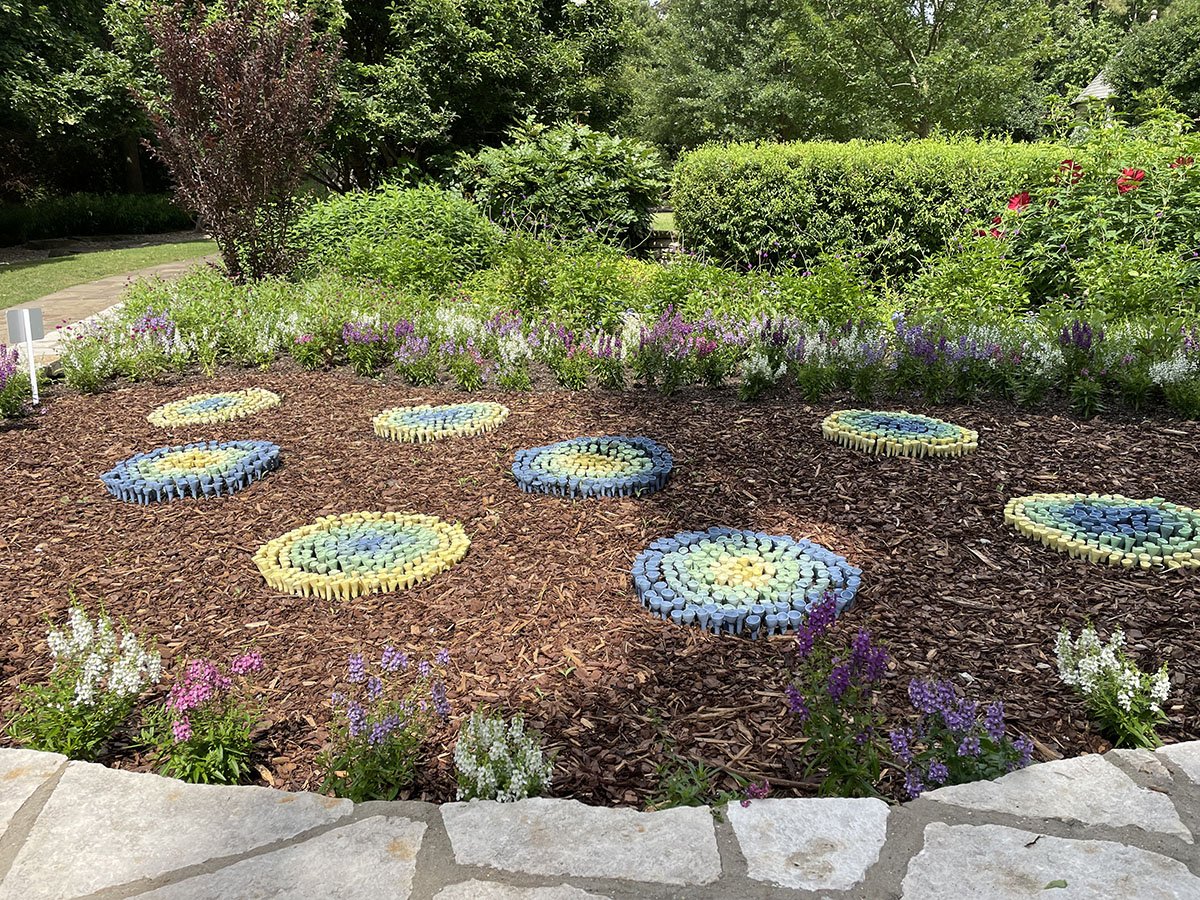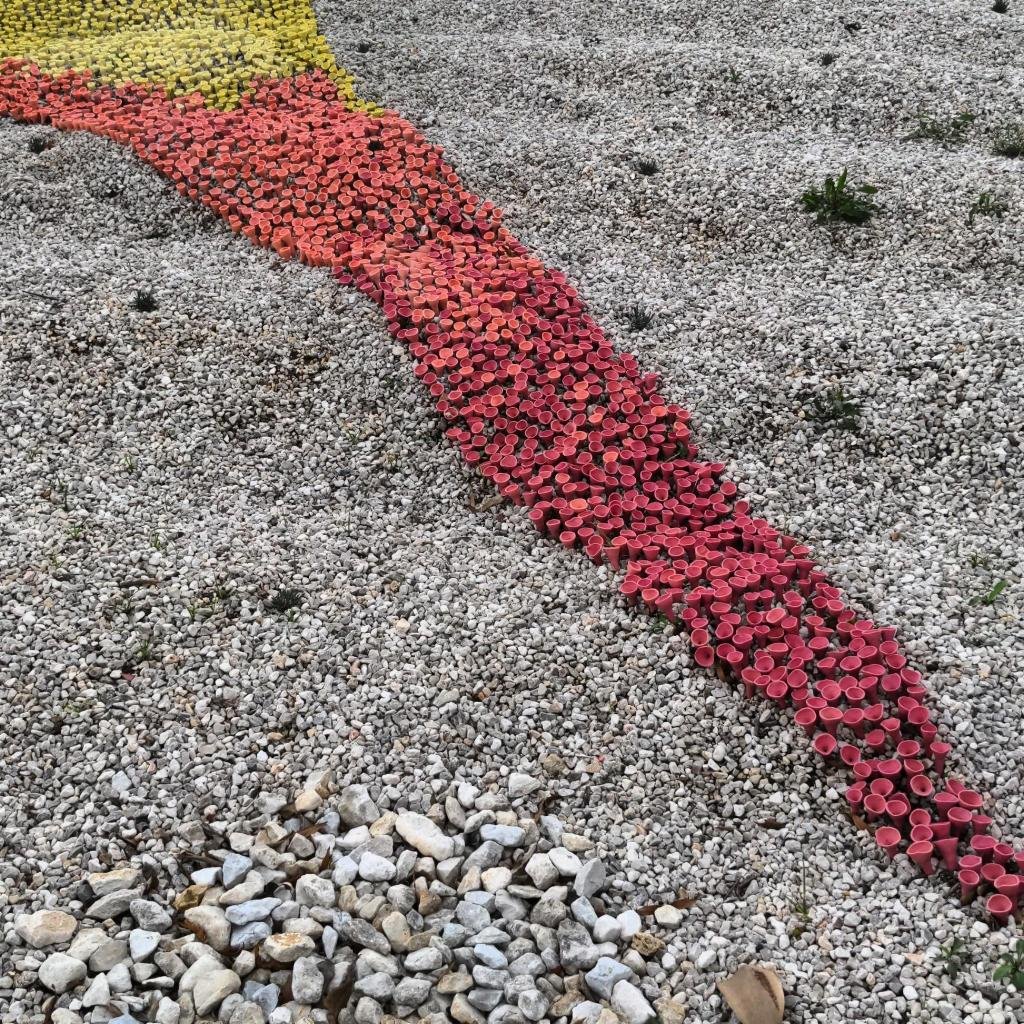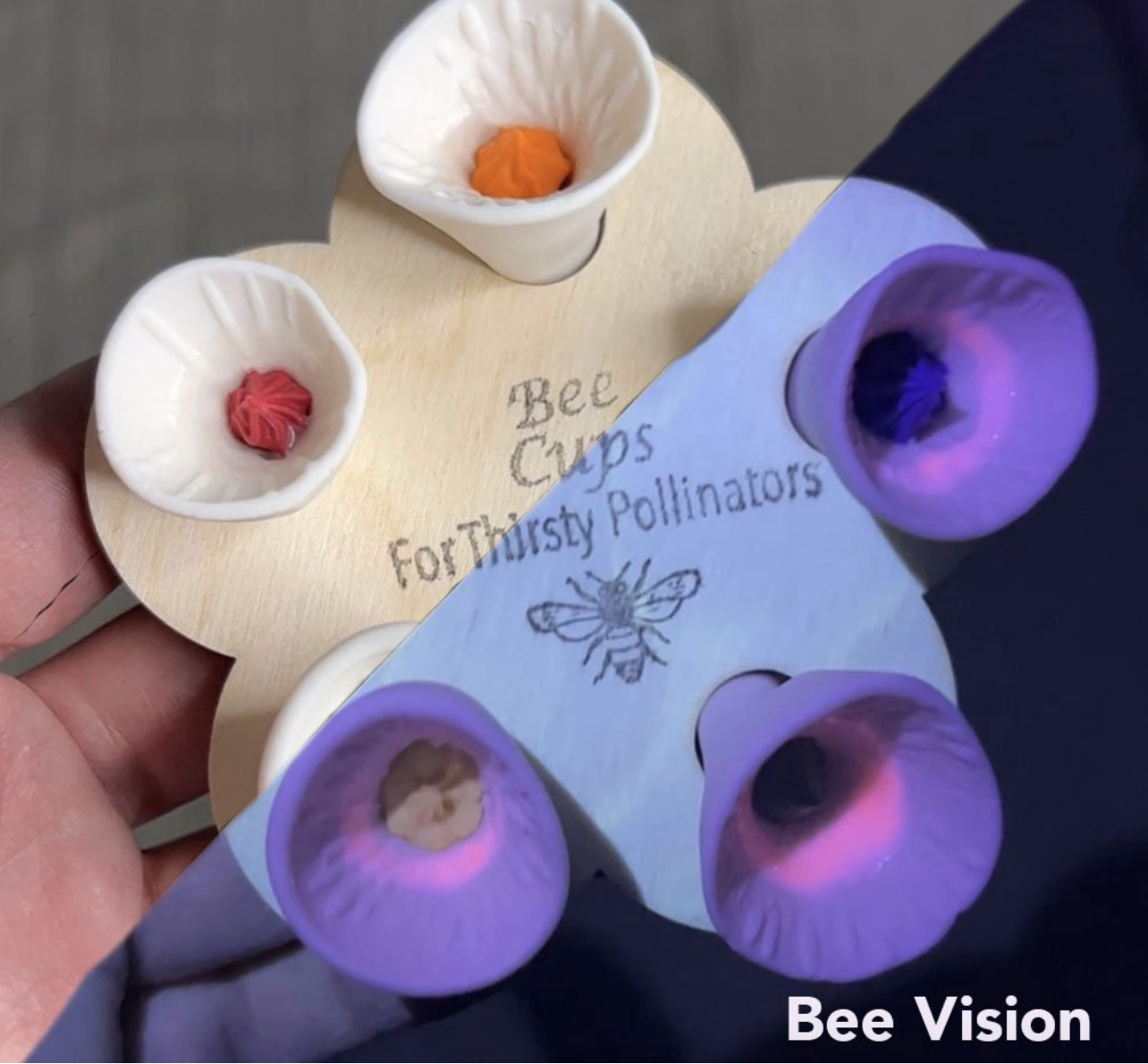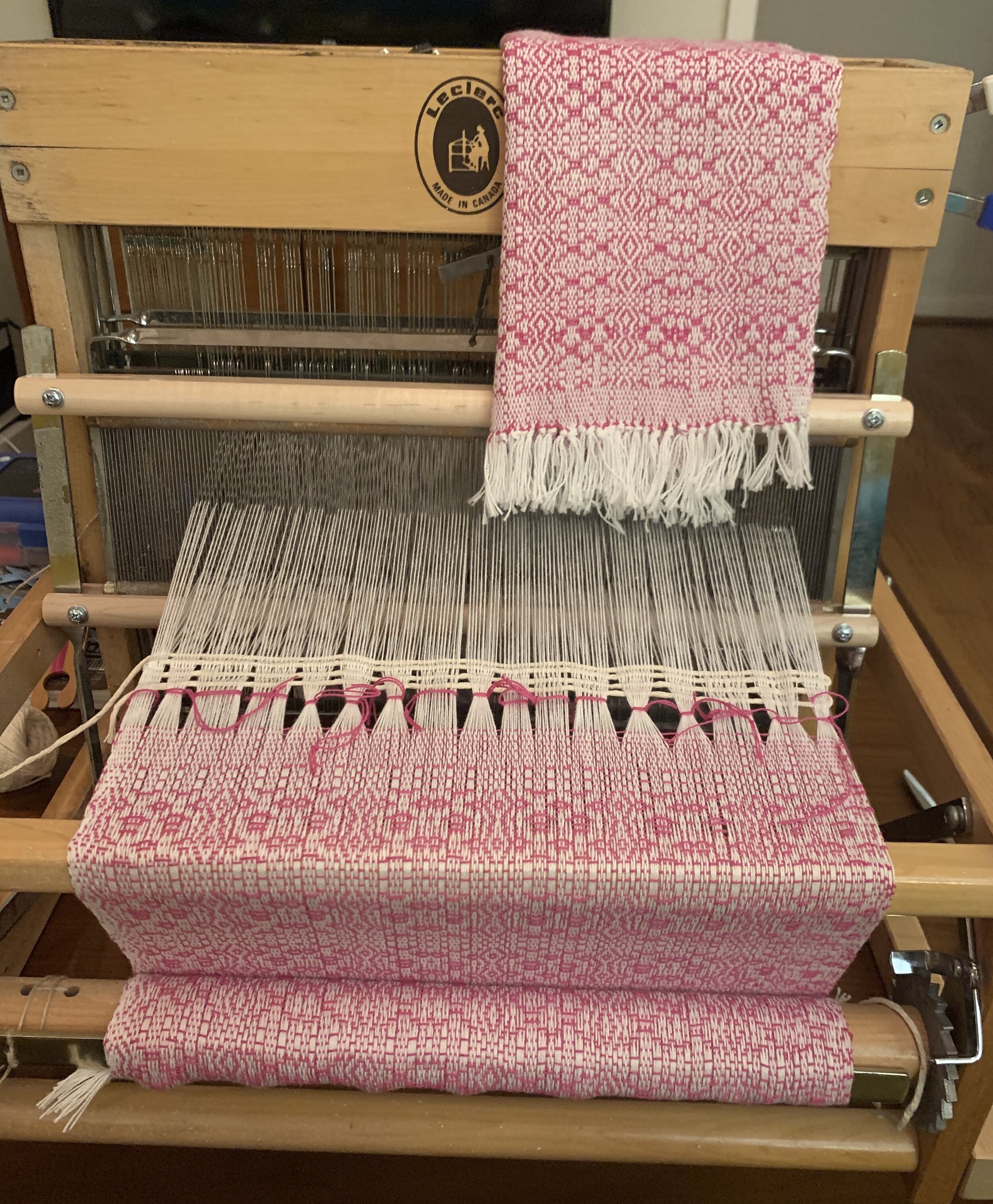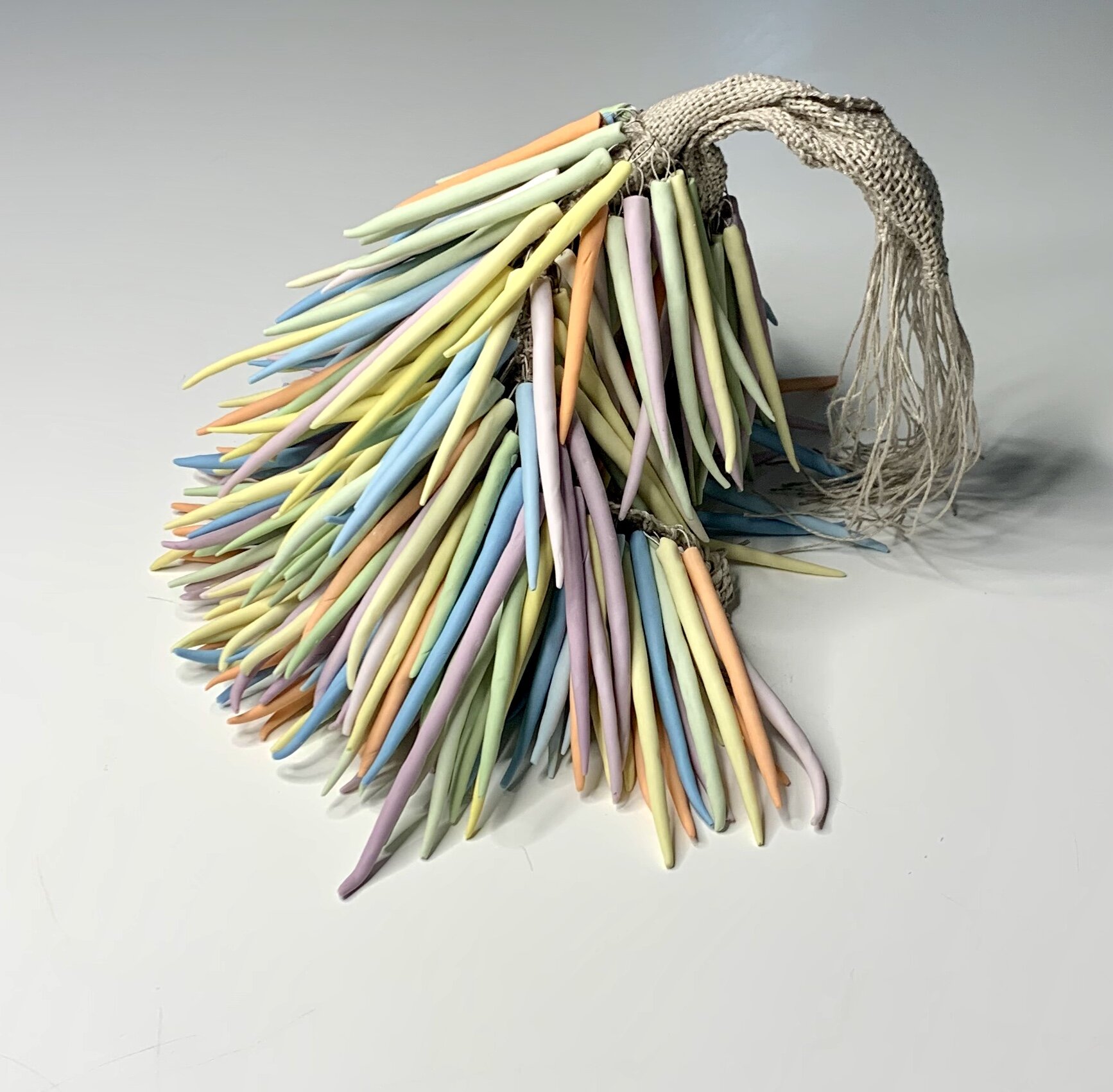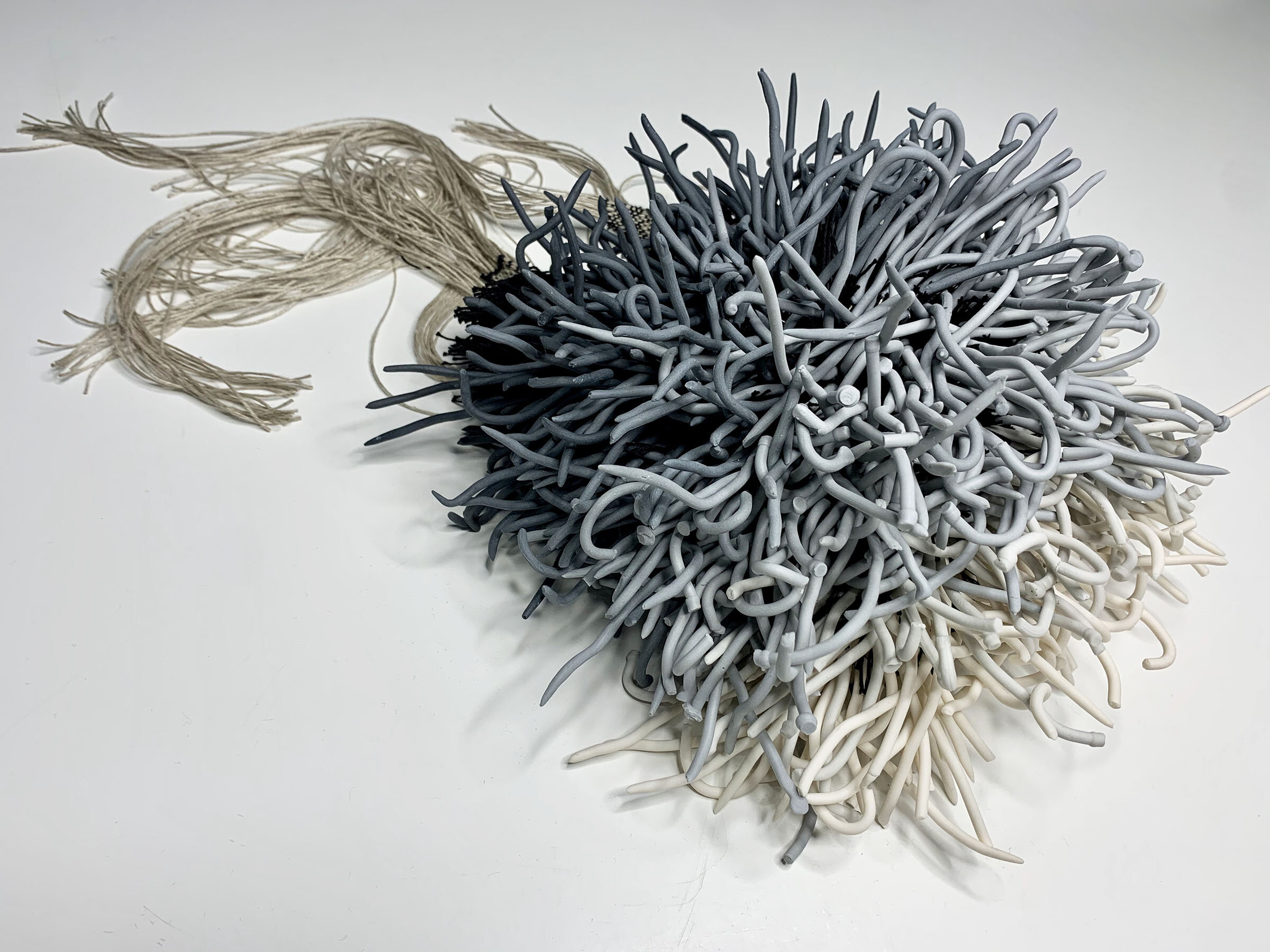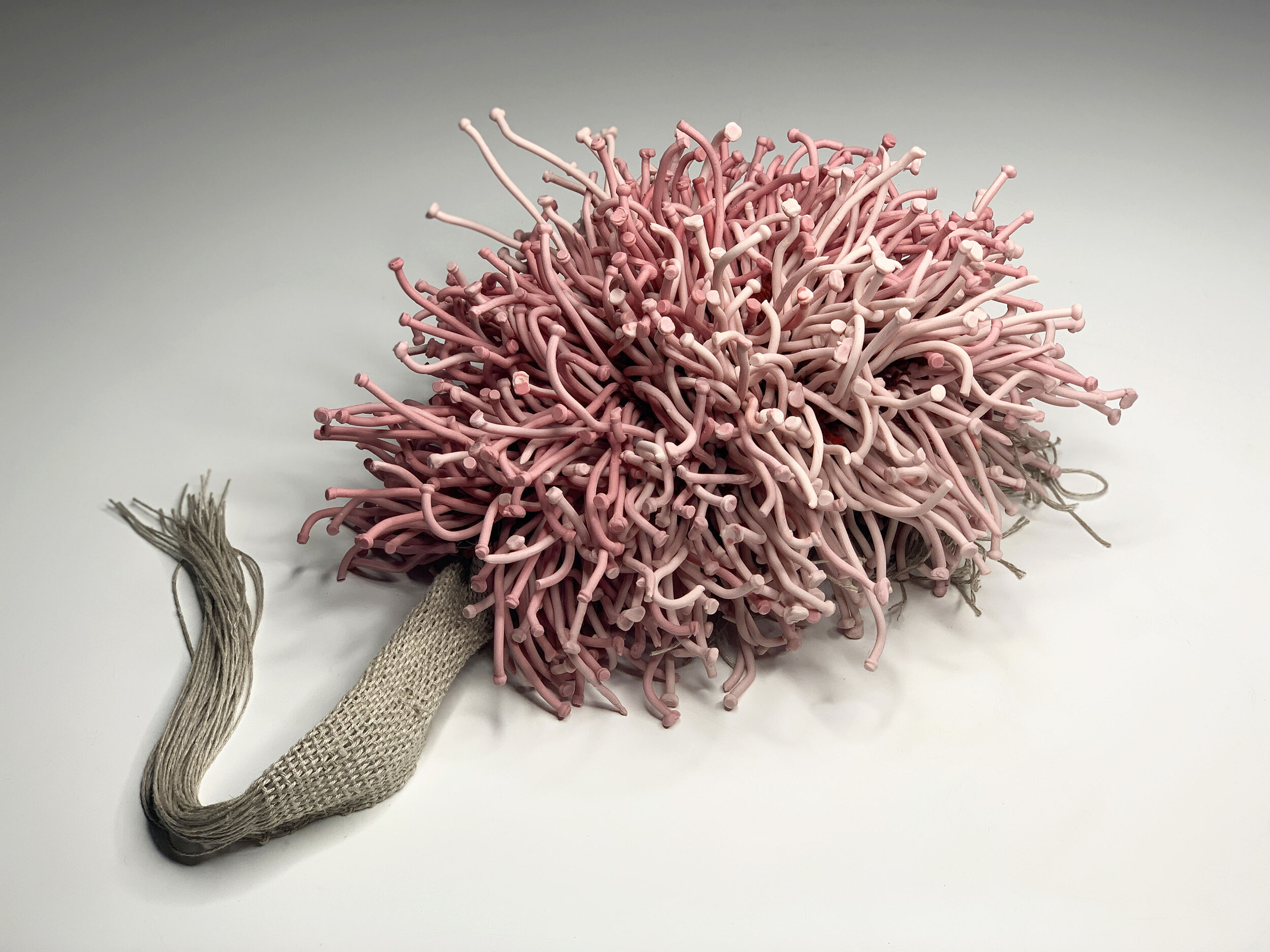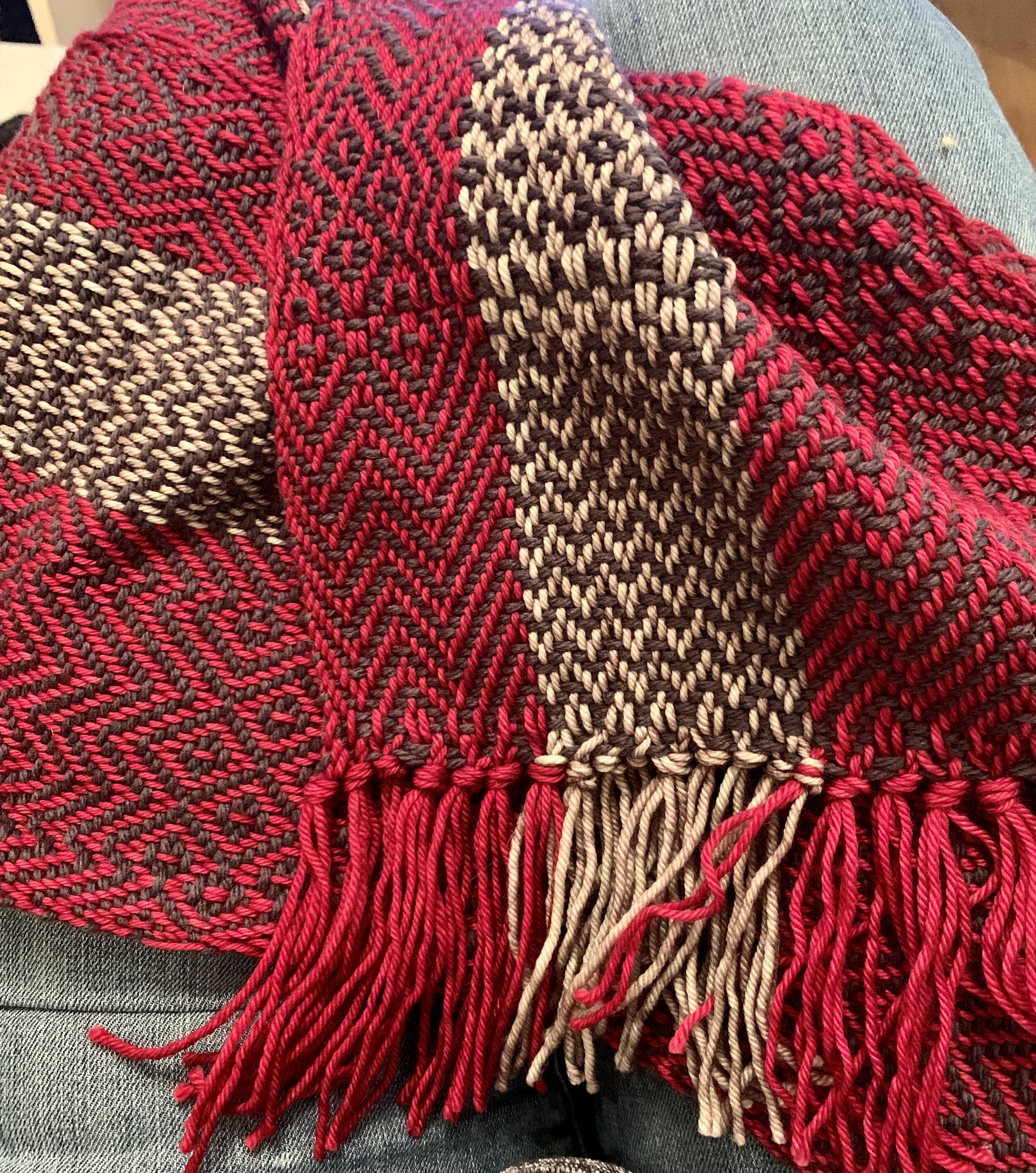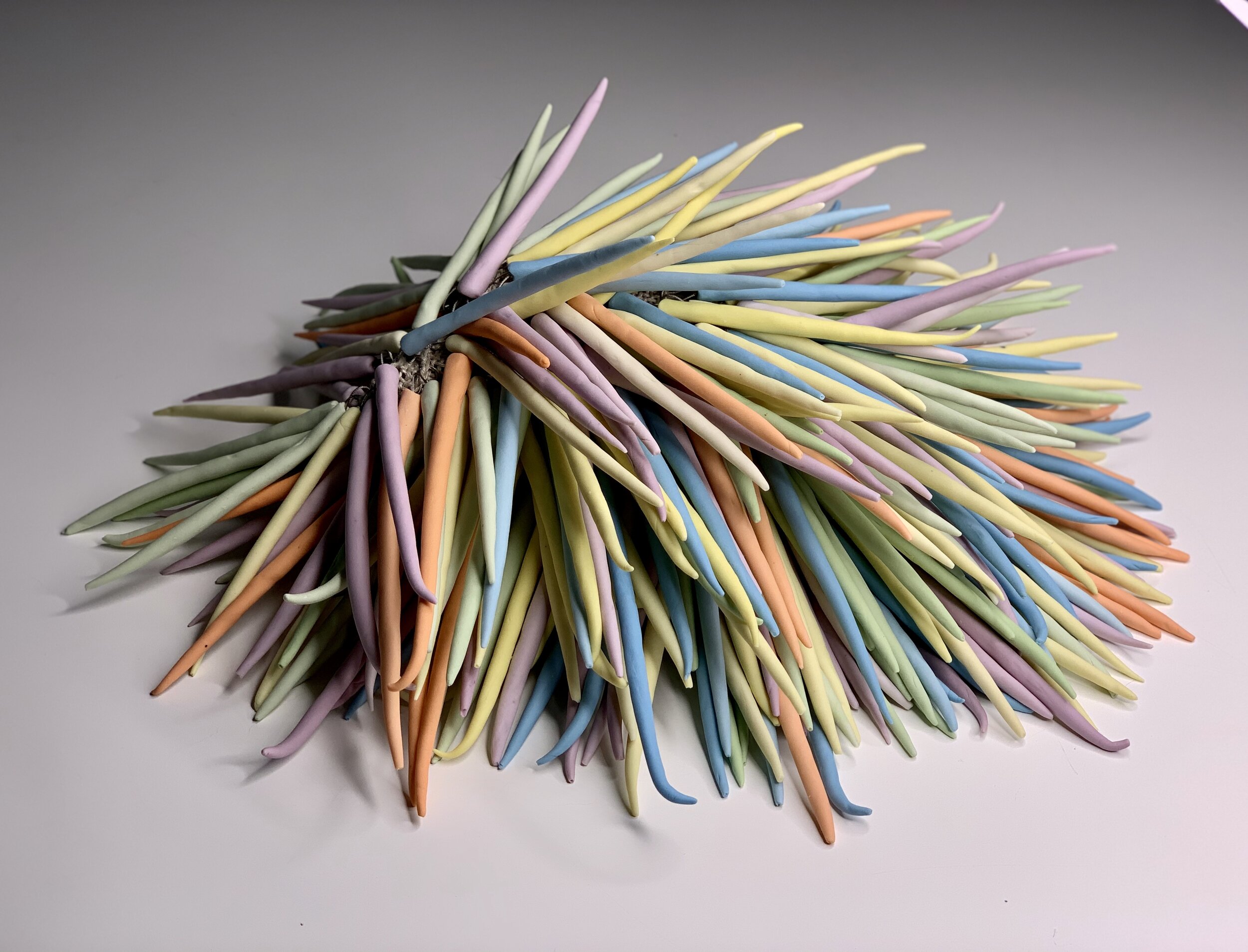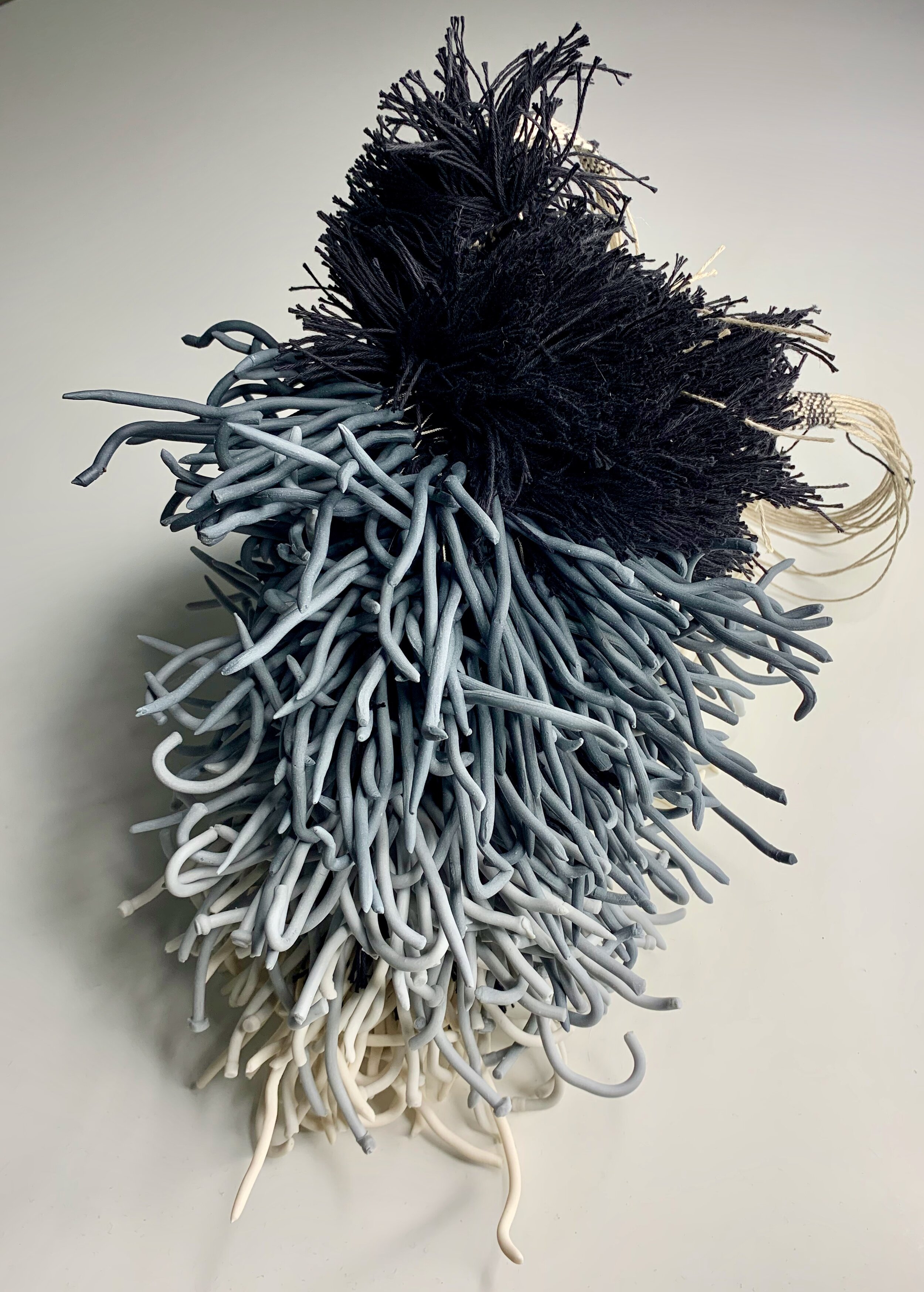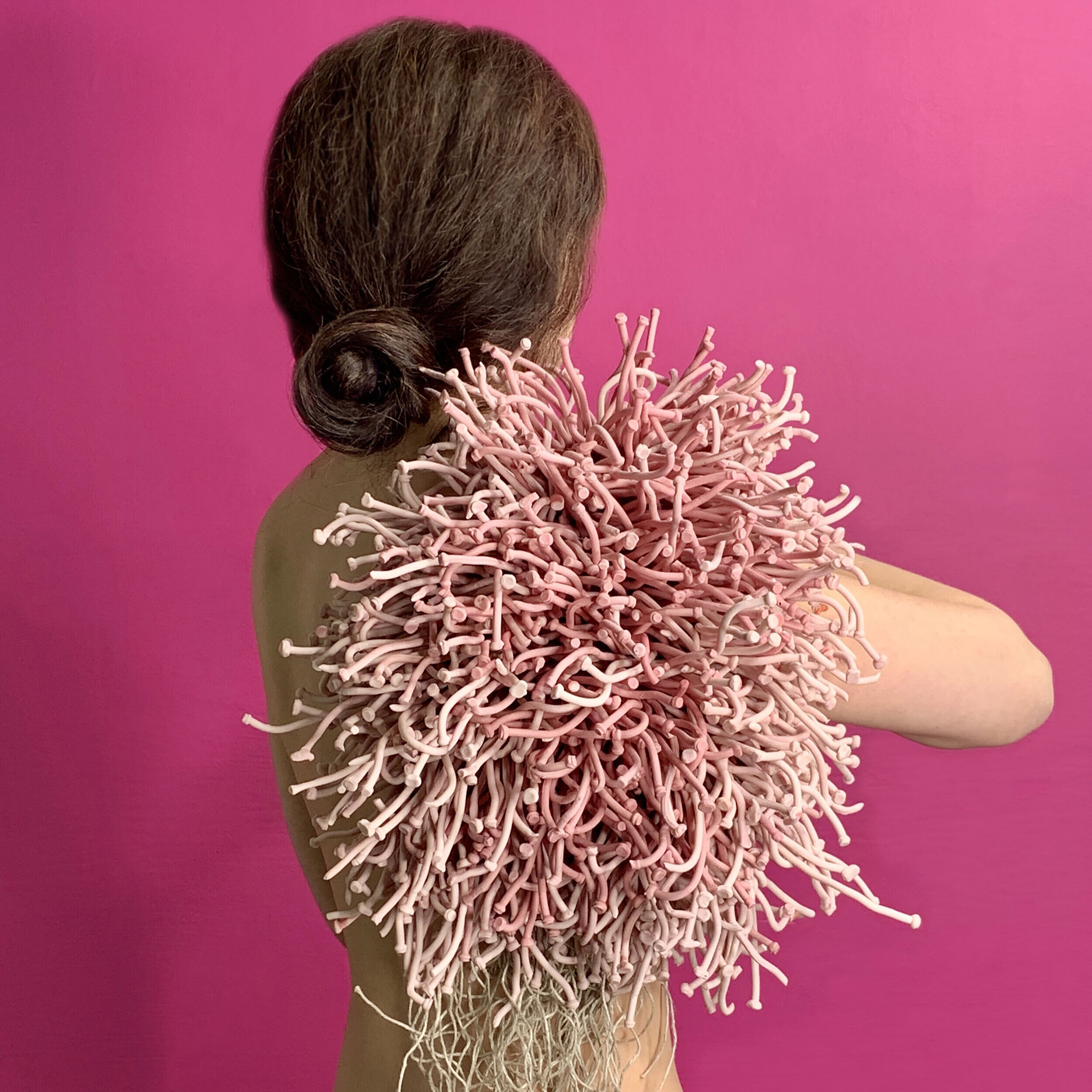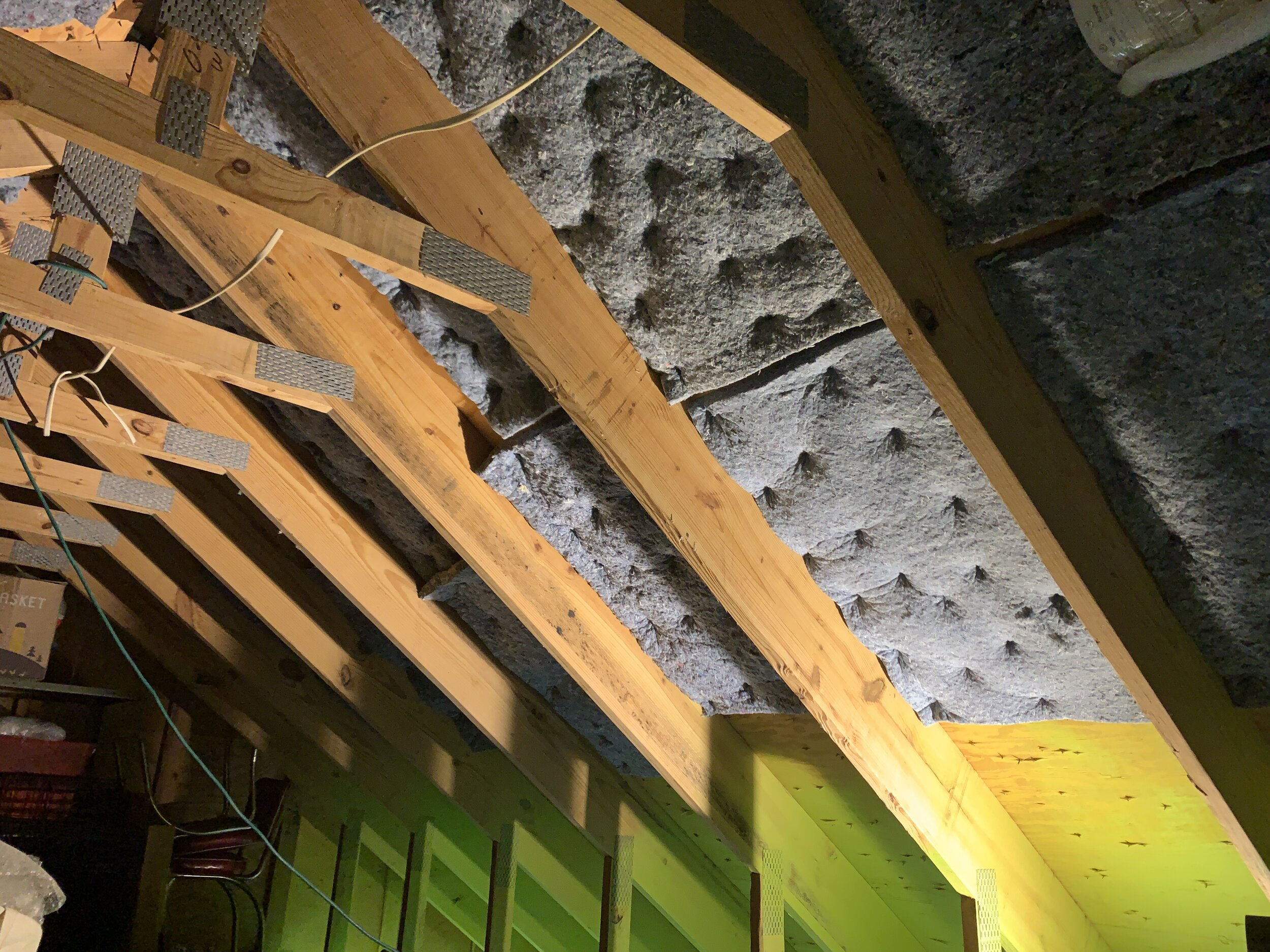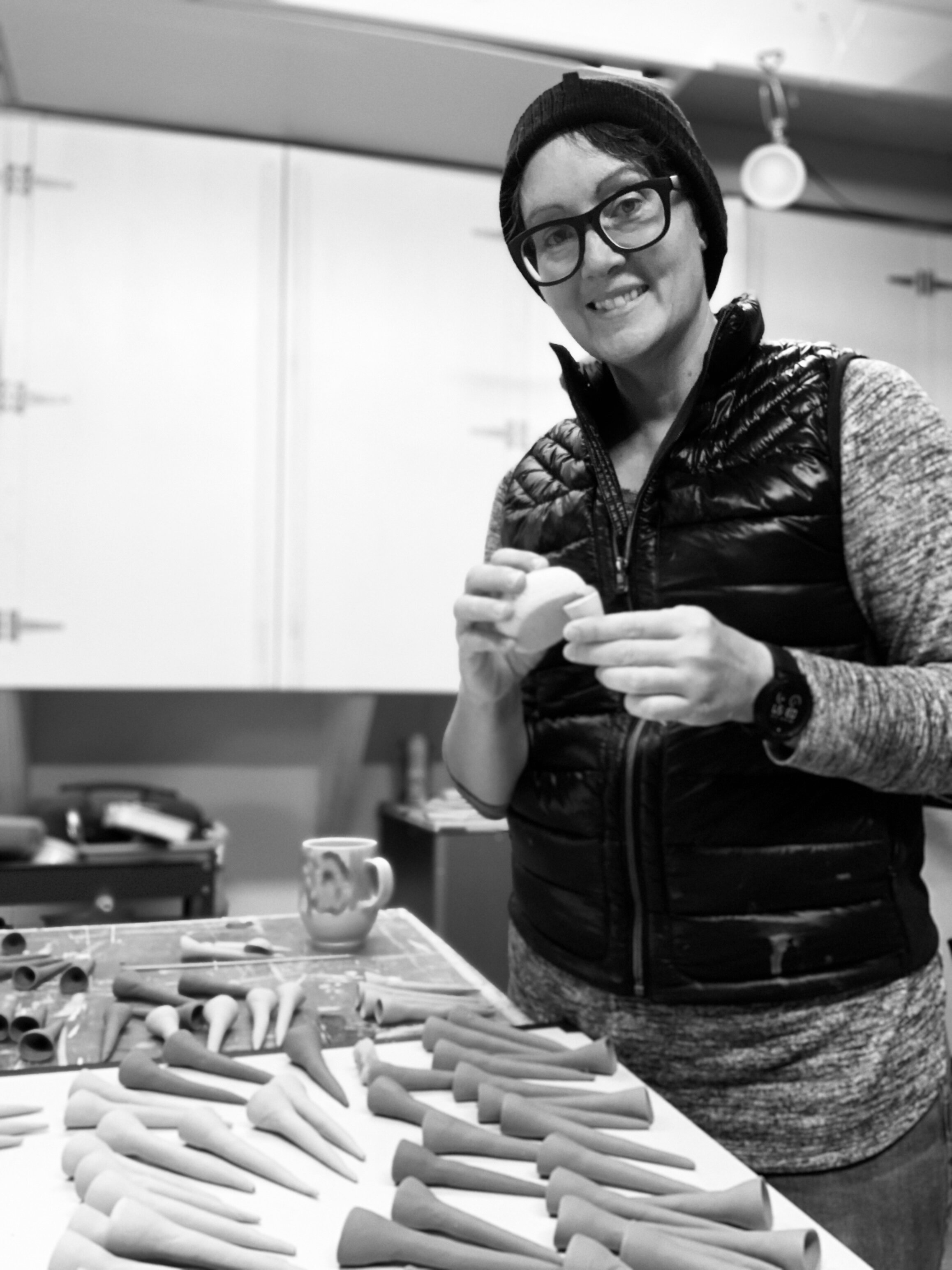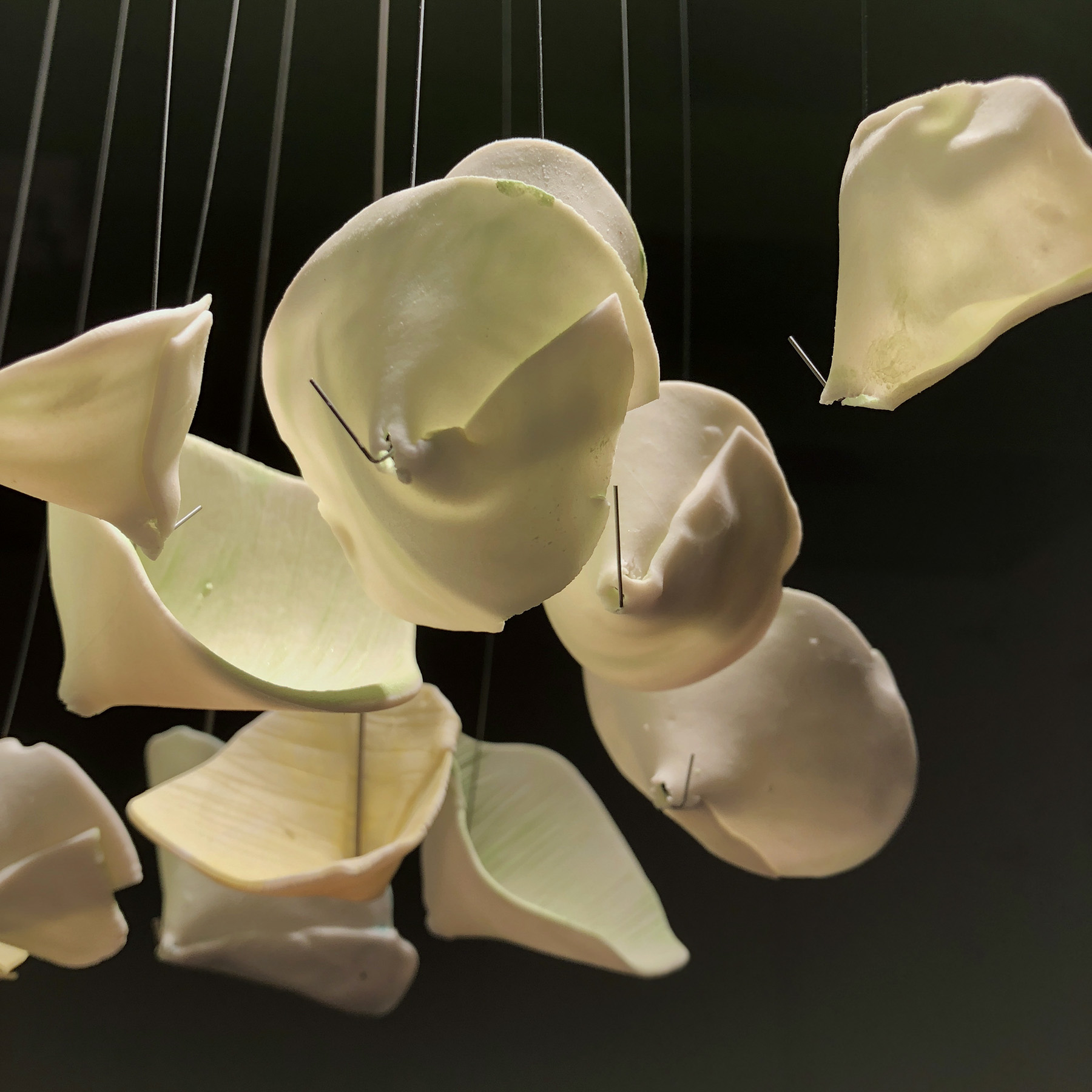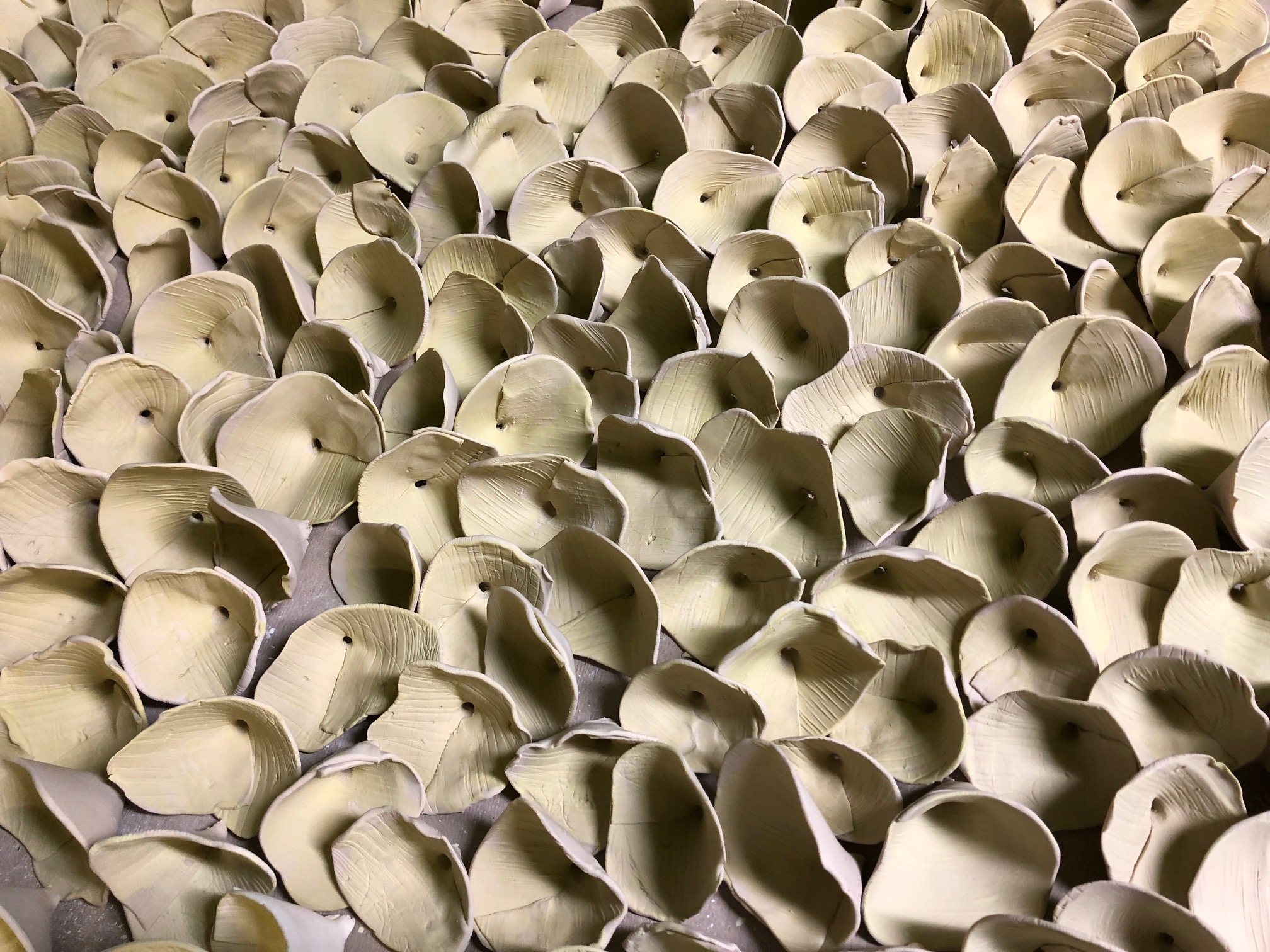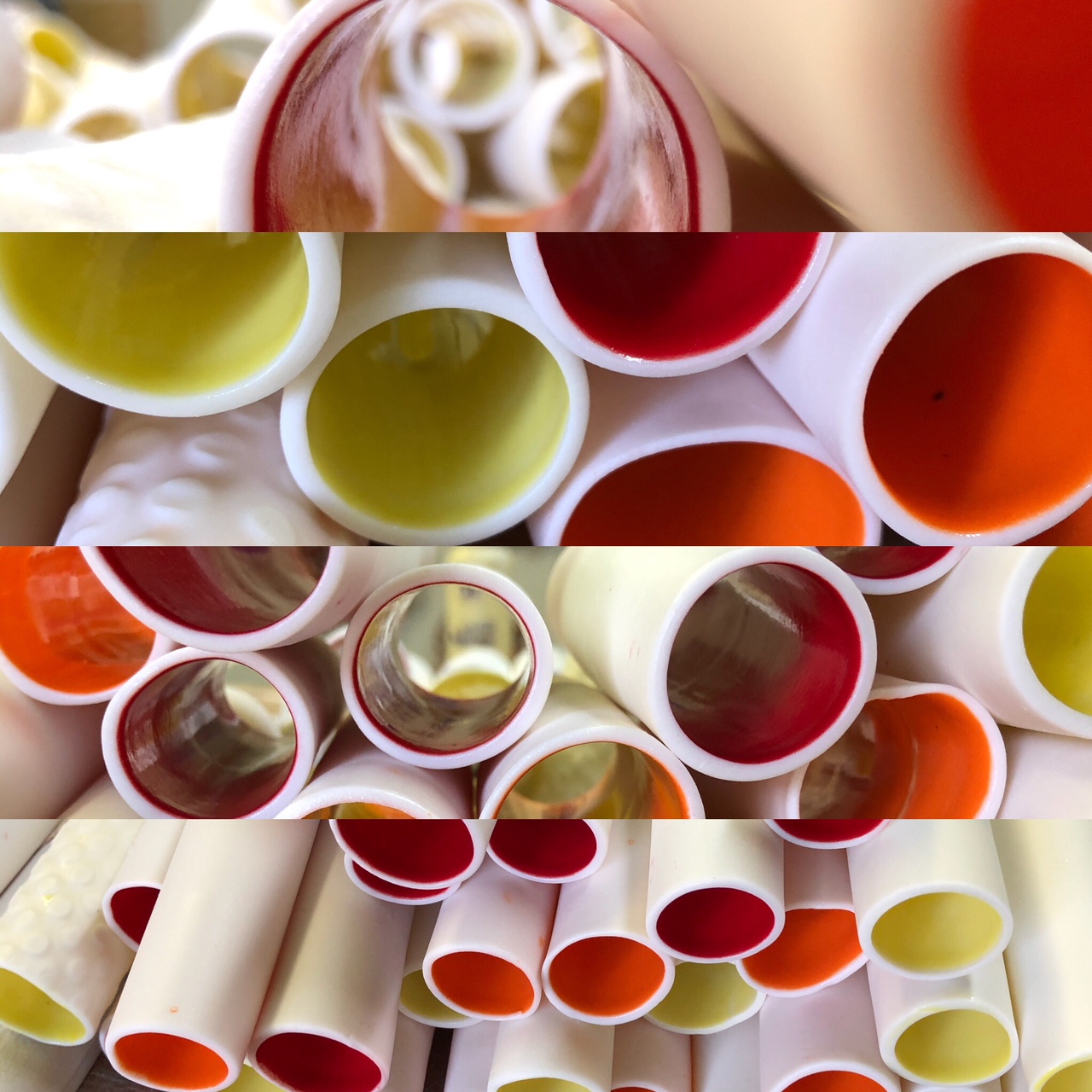Bee Cups are made of porcelain. Place them in your garden to collect a teaspoon of water for thirsty bees and butterflies.
How it started:
It was the spring of 2018 and I was packing up a semester of teaching. The final project for my ceramics students was an installation of colored porcelain that was to be placed in a specific spot on the Richland Campus. I dutifully demonstrated how to create a range of colors using ceramic pigments and porcelain. Then, I took my 300 porcelain pieces home and put them in my yard.
The first Bee Cups
For the next 18 months these porcelain spikes lined the earth by my mailbox. I noticed that when I watered, insects would come over to check them out. It took me a while to catch on, but I realized they were drinking the water that collected on the tops of the spikes. In 2020 I decided to improve on the design. I experimented with the size of the cup on top. Too large and the bees would drown, too small and the water evaporates too fast. One teaspoon of water was just the right size. One teaspoon of water was enough to let bees drink, but it evaporated by the end of the day so mosquitoes wouldn’t be a problem. I found out bees have toes so I added grippy texture. It was kind of like adding a bathmat for the bees.
Aaaaakkk! Bee toes are so cute!
The Bee Cup was born… and people seemed to like them! I sold them through Facebook and was surprised how quickly orders came in.
For the past 24 months I have been making it up as I go. Maybe it has something to do with my business minor in college, but that was soooooo long ago! (And I was lucky to get a C in most of those classes) Regardless, building Bee Cups LLC has been like trying to hold onto a rocket.
In December 2021 I resigned from my 20-year career in Academia to become a full-time entrepreneur and artist. My employees and I were jammed into my garage studio and my kitchen table was dominated by boxes, labels, tape, and Bee Cups. It was obvious we needed more space if we were to continue to grow. In early 2022 Bee Cups and Jen Rose Art moved into an industrial studio in west Dallas and I continued to scale up! In March I launched a ceramic glaze that is reactive to UV light and mimics the way flowers attract pollinators. I call it Bee Vision…. and it’s awesome! Bee Cups LLC has a patent pending on the Bee Cups and the Bee Vision glaze.
Although it seems like this all happened in a flash, I am building my business thoughtfully and sustainably. Currently, we are committed to buying our supplies from local sources whenever possible and manufacturing locally. This spring we made the shift to paper packaging. No plastics! I am eternally grateful to my full-time and part-time employees. There is a ton of joy in the studio and we project that joy into every product we make.
I have two 3000-piece large installations at Botanical Gardens under my belt and I’m ready for more. To date we have sold over 50,000 individual bee cups and a couple of new products are simmering on the back burner. I am constantly overwhelmed with gratitude. I am grateful that people find value in helping the pollinators, I am grateful that I can work with and mentor amazing young artists and I am grateful that I have the privilege to make a positive contribution to the environment. Each day I choose to show up, believe in my ideas, and trust that others will believe with me. I am truly blessed.


